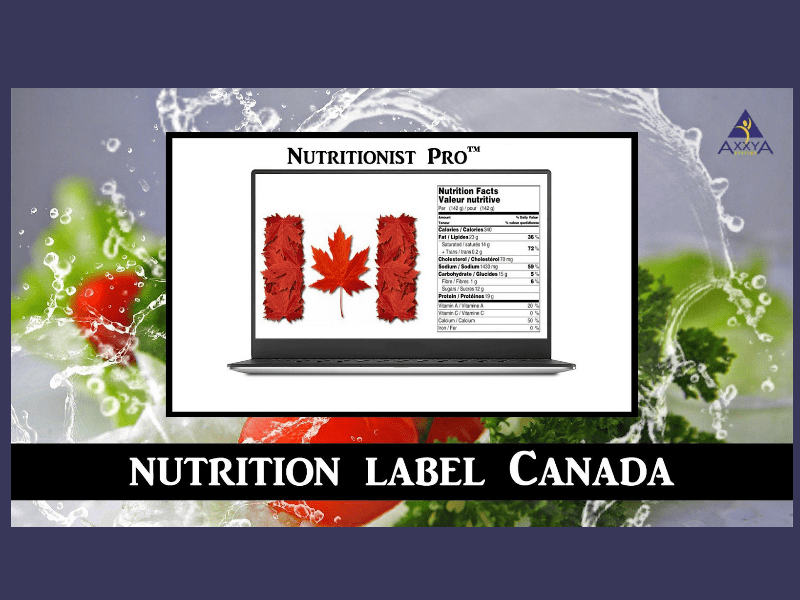Food labelling is mandatory in Canada. The framework set out by the Canadian Food Inspection Agency (CFIA) applies to foods imported into, manufactured in and/or sold in Canada. The Consumer Packaging and Labelling Act (CPLA) lays out a uniform method of labelling and packaging of pre-packaged consumer goods that are sold at retail markets.
The goal of this act is to prevent the fraudulent sales of products and provide mandatory label information with which consumers can make purchases of a food product with informed decisions. In this act, it is also clearly stated that the use of metric units of measurement and bilingual labelling are a-must.
Importance of Food Labelling:
Food labels provide basic product information, which includes common name, list of ingredients, net quantity, durable life date, grade/quality, country of origin and name and address of manufacturer, dealer or importer. Consumers get healthy, safety and nutrition information, which includes the instructions for safe storage and handling, nutrition information, such as the quantity of fats, proteins, carbohydrates, vitamins and minerals present per serving of stated size of the food and also may receive the specific information on products for special dietary use. A food label is also a means to market, promote and advertise food products with promotional information, label vignettes, and label claims, such as cholesterol-free, low-fat, product of Canada, no preservatives added, etc. Today’s health-conscious consumers want to make informed food choices and food labels help them in making it.
What information does a food label contain?
The food law mandates display of the following information for the pre-packaged food items.
- Nutrition facts table
- Ingredient list
Nutrition claim is optional until a nutritional claim is made.
What does the nutrition facts table contain?
The nutrition facts table has to contain calories, serving size, % daily value (dv) and 13 core nutrients (fat, saturated fat, trans fat, cholesterol, sodium, carbohydrate, fibre, sugars, protein, vitamin D, Calcium and Iron). Based on the serving size, the information in the nutrition facts table is prepared.
What does the ingredient list have to contain?
The ingredient list has to contain all ingredients of a food, in order by their weight with the heaviest ingredient listed first and the lightest ingredient listed last. This list is useful to know what the product is made of and if the product contains allergens.
What does the nutrition claims section have to show?
As said when nutritional claims, health claims are made in label vignettes, promotional labels, food manufacturers need to substantiate their claims with showing the source (such as source of calcium), low (such as low fat), reduced (such as calorie reduced), and so on.
Do all foods have to contain food labels?
The answer is all foods don’t need to contain labels. Some of those are like fresh fruits and vegetables, foods prepared or processed at the store, foods which contain minimum nutrients such as tea, etc. In Canada, the nutrition facts table is not mandatory in restaurants when it comes to attaching it to their products.
Do food manufacturers make food labels manually?
There are various ways of making food labels, namely by-hand, lab testing method, and using an ingredient database through an analysis software. Manual food labelling is arduous, time-consuming and expensive. The same applies to lab testing methods which may also get expensive based on trying different formulations. In sheer contrast, implementing a nutrition food labelling software may offer advantages over other methods.
In Conclusion:
The objective of food labelling is clear. With it, food manufacturers can help consumers make informed choices on the foods they consume. In many industries in Canada, there are dietitians to assist their consumers with healthy meal planning ideas, cooking, and reading food labels. Food regulations also make it mandatory for food manufacturers to make their food label fonts legible together with displaying nutrition information on labels with integrity.
If you are a food manufacturer and struggle to calculate nutrient values of a food, build custom food labels or add custom ingredients as needed, try Nutritionist Pro™ – an online nutrient analysis application built with all great features necessary for quicker and easier food labels while staying compliant with the Canada food regulatory.
Go to www.nutritionistpro.com/ for additional details. For questions, please email: sales@axxya.com
